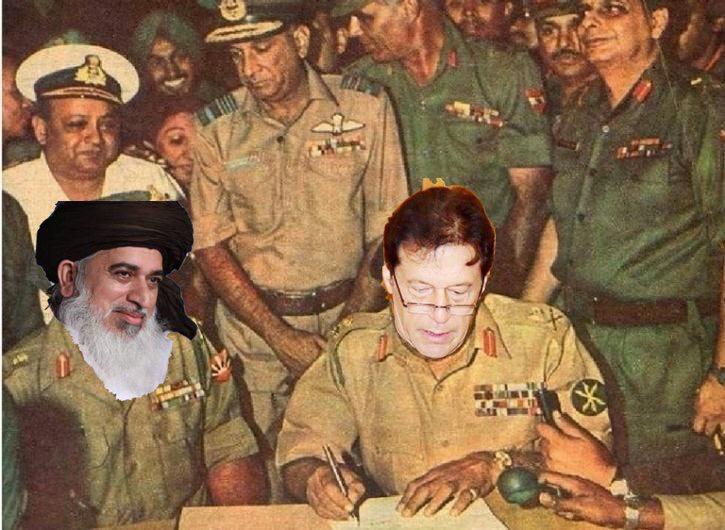 The State in Pakistan is unwilling to accept the reality that the latest protests by the Tehreek e Labbai Pakistan (TLP) demonstrate once again that the state has capitulated to the very forces that it helped create and nurture for the last few decades.
The State in Pakistan is unwilling to accept the reality that the latest protests by the Tehreek e Labbai Pakistan (TLP) demonstrate once again that the state has capitulated to the very forces that it helped create and nurture for the last few decades.
According to veteran human rights activist IA Rahman, the reality is that “through their latest dharna, conservative religio-political forces have tightened their siege of the state of Pakistan. And their next attempt to change the character of the state might be somewhat stronger.”
Tracing the rise of these groups Mr Rahman argues that the “recent buckling down of the state to mobs of the radical right is not the first time it has done so in Pakistan’s history. But the repercussions on the country’s social fabric are cumulative.”
Going back to Partition Rahman asserts that “a number of religious groups called upon the government to replace the democratic foundations of the few-months-old state with theocratic pillars, a proposition the Quaid-i-Azam had repeatedly repudiated before independence and, finally, in his August 1947 speech.”
Further, “Throughout the decades since 1949, the state has been yielding to theocratic forces bit by bit, and the latter have used each concession to press for a further erosion of the democratic character of the state. The custodians of power have chosen to compete with them instead of holding on to the pledges made to the people during the struggle for freedom. … Several instruments have been used by the religio-political lobby to force the state to compromise its principles. The first method was to stoke an anti-Ahmadiyya agitation to persuade the Daultana government of Punjab to bring down the Nazimuddin government at the centre. This was the only time force was used to suppress the challenge to the state, though Khawaja Nazimuddin could stay as prime minister for only a few months more. And the anti-Ahmadiyya agitation for the realisation of theocratic goals continues to this day.
Then, “In 1974 the Bhutto government took the extraordinary step of arming the state with the power to decide who is a Muslim and who is not and claimed to have resolved a 90-year-old problem. The problem is still there and has, indeed, grown bigger. The 1974 decision only enabled General Ziaul Haq to destroy the constitution of 1973 and enforce his illiberal version of Islam. Assuming the leadership of the theocratic lobby, Ziaul Haq created a parallel judicial system, sowed the seeds of sectarianism, fostered intolerance, institutionalised discrimination against minority communities, tried to push society, especially women, back into the mediaeval period, and embroiled Pakistan in the Afghan war — with horrible consequences for our state and society both. As a result, the Muslims of the country have been dividing themselves into sects and subsets, each claiming exclusive power to redefine the state and its citizenship.”
Today, “each attack on the state has had serious repercussions on the country’s social fabric. After each round of clash between the state and its challengers, society has been brutalised and has become more divided, more violent and more intolerant. Take the present case. This time, the challengers had literally no section of the public on their side. But even those who deplored arson and destruction of property, including the religious political parties and individual scholars, did not censure the agitators for their indefensible stand. The public will take its cue from this posture of support to the agitators and that will convince the dharna organisers that they have not lost the battle. It is only a matter of time before they, or their more militant siblings, return to mount a fresh charge against the state.”
![]()





